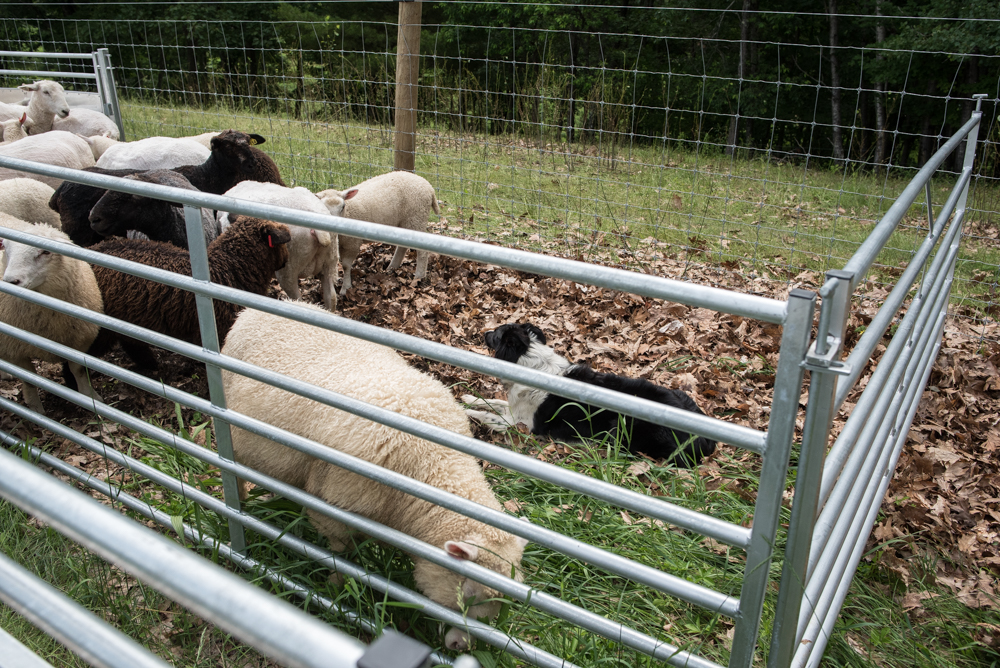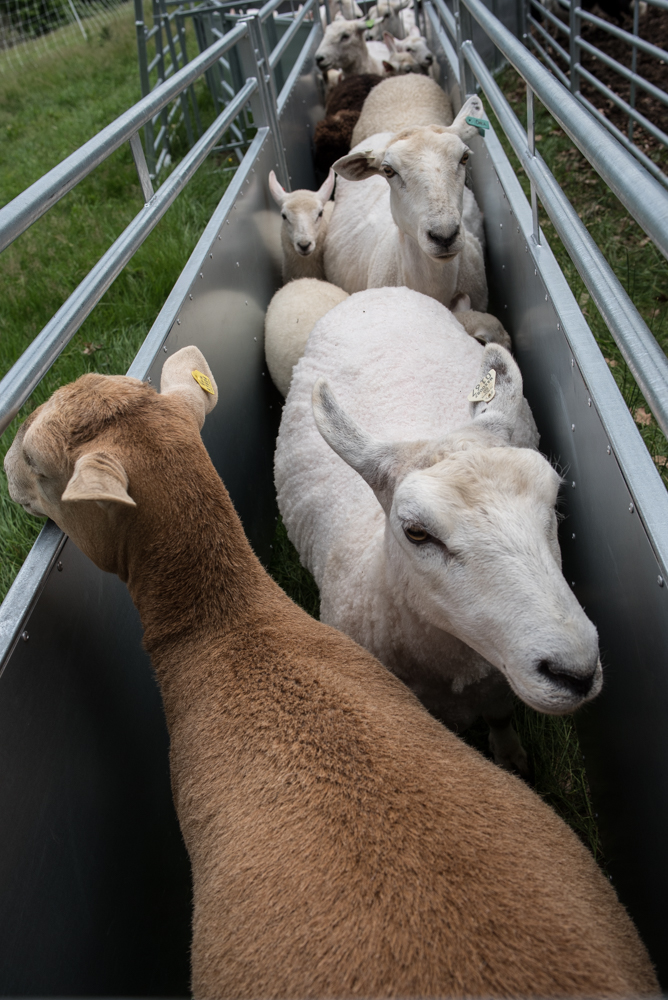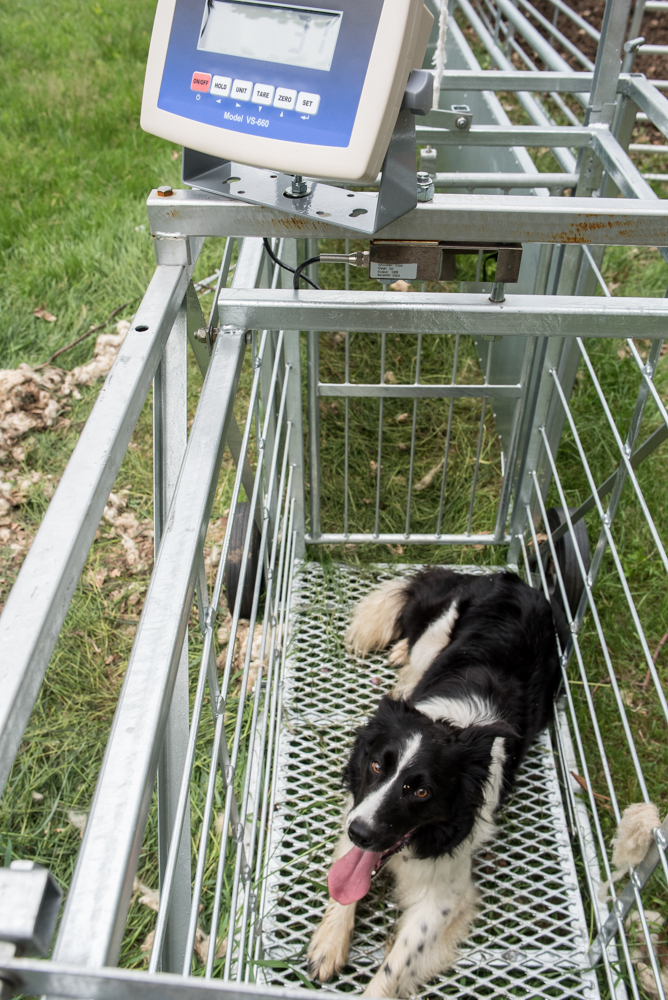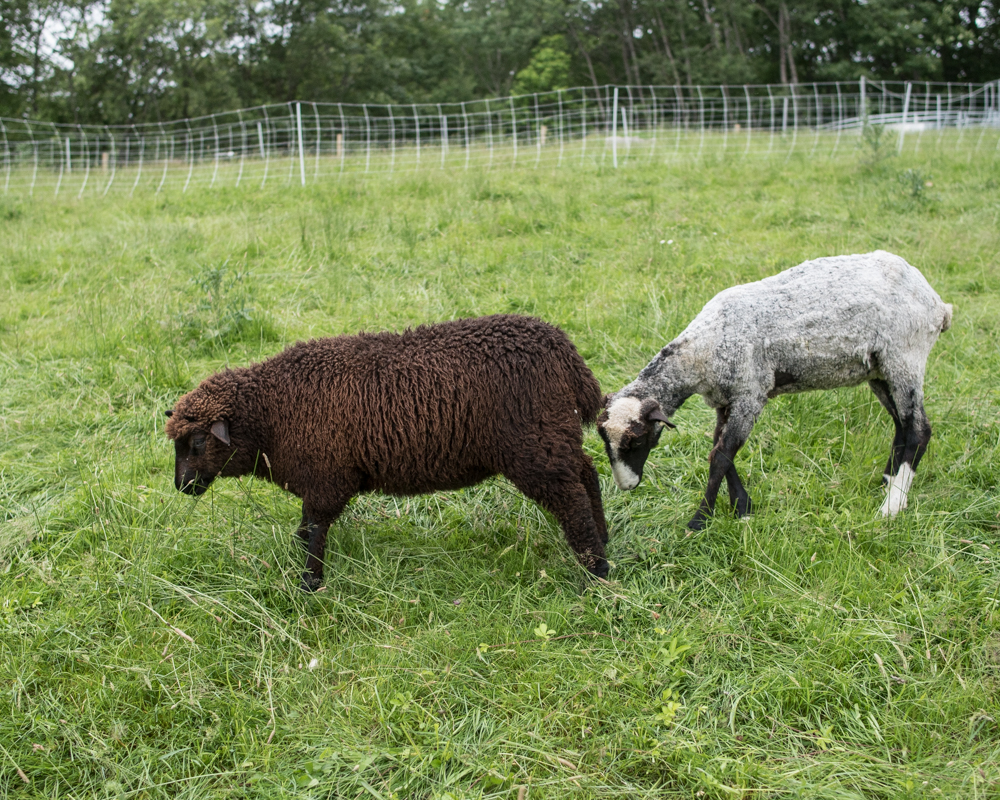I think I passed my midterm exam in Shepherding 101 this afternoon. In a few days I’ll move the main part of the flock off the farm to eat other people’s grass for a month or so, and I knew I needed to weigh all my sheep and vaccinate the winter lambs before everyone left. In the past, I’ve had help with projects like this, mostly from Bill Fosher, so I’ve been procrastinating in the hope that extra people with lots of free time would materialize. With move day looming (and helpers not looming), I figured Cass and I should just get it done. Our task list looked like this:
- Set up the scale at the end of the handling system.
- Arrange temporary fence so that we could move sheep into the handling system with little risk of escapees.
- Tether Bravo, since he has appointed himself Disrupter of Herding Activities. Cleo goes with the flow, amazingly, since she’s never worked with herding dogs before.
- Move the flock (65 sheep) from their grazing area, where they want to be, into the handling system, where they don’t want to be.
- Push the sheep into the raceway of the handling system about 10 at a time.
- When they’re single file in the raceway, I can note each sheep’s ear tag number, check body condition score* for each one, and vaccinate the winter lambs. This often involves climbing in with the sheep and straddling less-cooperative members of the flock.
- Move each sheep onto the scale and make note of their weight.
- Finish by moving everyone back to their grazing area, freeing Bravo, and telling Cass what an awesome partner she is.
Without a helper, I didn’t manage to photograph the event as thoroughly as I’d have liked, but I made a few images. Here, Cass has moved the flock into the handling system, and I’m asking her to apply some psychological pressure to the sheep to move them through.

She is starting to really understand the kinds of things I need her to do on the farm, and she’s rising to the occasion. I suspect she often wonders why I’m so slow and clumsy around the sheep. The next image shows the first batch of sheep in the raceway, waiting to get counted, felt up, and weighed.

This part is a little like dealing with Boston traffic, when you can always count on someone pointing in the wrong direction. I didn’t get my act together to photograph any sheep on the scale, but Cass was willing to be a stand-in afterwards.

The purpose of today’s exercise was to get some hard data about how the various members of the flock are doing. I have a general sense of who seems to be growing well and who looks too thin, but actual weights and body condition scores give me a much better basis for understanding flock health and who is performing well**. For instance, I had a sense that ewe #139 was not much bigger than her lamb, #701, born on 3 February, but I was a little surprised to find out that the ewe (on the right in the photo below) weighs 106 lbs and the lamb 98 lbs.
 The entire process, from gathering the sheep, through all the handling, and returning them to their pasture, took about 2-1/2 hours. When we finished, I was exhausted, but Cass only let on to being thirsty; I suspect we’ll both sleep well tonight, though.
The entire process, from gathering the sheep, through all the handling, and returning them to their pasture, took about 2-1/2 hours. When we finished, I was exhausted, but Cass only let on to being thirsty; I suspect we’ll both sleep well tonight, though.
_________________
*Body condition score, or BCS, is a system for (sort of) objectively measuring how fat or thin a sheep is, where a score of 1 refers to an emaciated animal, and 5 is a rolly-polly. Bill has trained me in his interpretation of the scoring, but the important thing is to maintain some measure of internal consistency so that I can reliably compare scores for an individual sheep over time. Lactation is greatest metabolic drain on a ewe, so I’m interested in comparing today’s scores with those from a couple of months after weaning. Ewes should fatten up considerably once they are no longer making large quantities of milk; if that doesn’t happen for a particular ewe, it’s a sign that something else is wrong.
**Here I’m veering into PETA-unfriendly territory. I’m trying to run a farm, not a petting zoo, so many of my charges will eventually become someone’s dinner. It’s critical for me to know how well lambs are growing, and when they are big enough to go to slaughter. It’s even more important that I understand how my breeding ewes are doing — do they produce enough milk for their lambs to grow well? and can they maintain their own weight while lactating? A ewe who completely depletes herself to produce big lambs likely won’t have much reproductive success the following year. And sheep vary greatly in how efficiently they convert grass into animal; some of my ewes are getting fat on pasture, even while lactating, and others are barely holding their weight. At some point, ewes who can’t thrive without supplemental grain will also go to freezer camp.